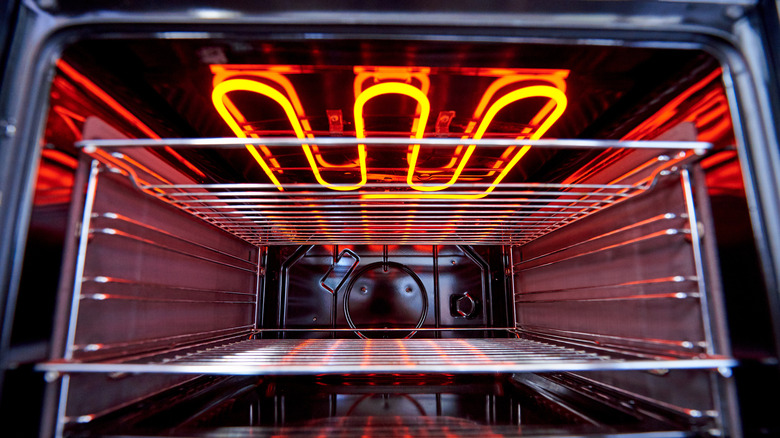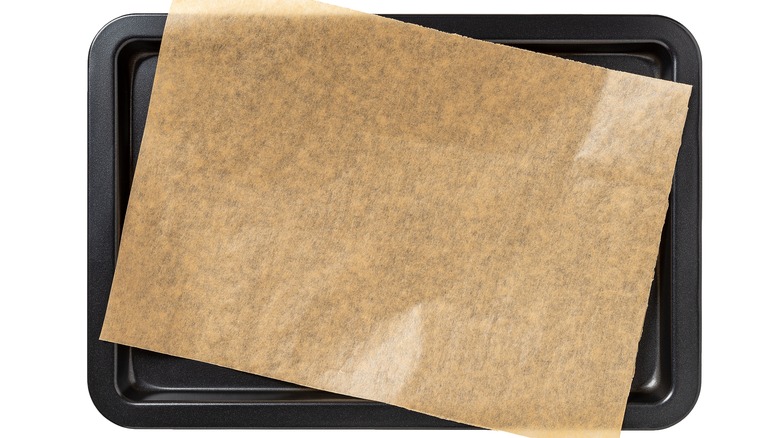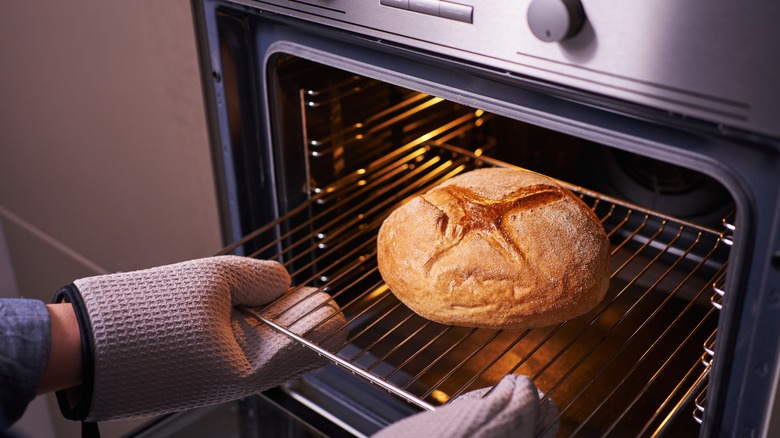The Parchment Paper Trick To Map Out Your Oven's Hot Spots
If you love to bake, you've probably experienced the unique frustration that comes with an oven that doesn't heat evenly. Maybe your cookies were underbaked on top but burnt on the bottom. Or maybe half of your cream puffs rose while the other half remained flat. Blame hot spots, areas of your oven where the temperature varies.
Hot spots can be tricky. While ovens tend to be hottest along the top, sides, and bottom, no two are exactly the same. A good convection oven can help mitigate hot spots but won't fix them entirely, and you can't use the convection setting for everything. For an even bake, your best bet is to learn your oven's hot spots and adapt accordingly.
While many bakers get a sense for their ovens over time, mapping your oven's hot spots is a quick and easy way to understand your oven without sacrificing homemade cookies to trial and error. With a little strategic thinking, you can learn to work with your oven's hot spots — or even make them work for you.
How to find your oven's hot spots
Finding your oven's hot spots is easy. You just need baking sheets and parchment paper. Heat your oven to 400º Fahrenheit, then line large baking sheets with parchment paper and place them on the racks. Keep an eye on the paper and take it out when dark spots begin to form at around 10 to 20 minutes. The dark spots will help you map your oven's hot spots.
If you want a clearer picture, some bakers recommend coating the parchment paper with a thin, even layer of granulated sugar and baking it until spots of melted sugar start to form. Be careful, though. Melted sugar is a hassle to clean up.
The internet is full of other hacks, too. One method involves placing slices of white bread evenly over the surface of your oven rack and taking note of where they burn. Another suggests methodically moving an oven thermometer to different spots and recording the temperature changes. Using an entire loaf of bread seems a little wasteful, and mapping an oven with a thermometer is time-consuming and finicky. Parchment paper might be your best bet — unless you find the idea of eating unevenly-baked toast for a week appealing.
What should you do about oven hot spots?
Now that you know how to find your oven's hot spots, what can you do about it? Well, you can always use hotspots to your advantage. Want bread that's crispy on the top but soft inside? Place it closer to the top of your oven. Having trouble getting the bottoms of your pies to set? Shift your pan so that the bottom faces a hot spot.
If you want your baked goods to bake evenly, place them in the center of the oven and rotate partway through the baking process. Most baked goods should be rotated at the halfway point, but if you're baking something delicate, wait until it's fully set around two-thirds through.
If you want to improve the heat distribution in your oven for an even bake, consider getting a pizza stone. Sometimes called baking stones, pizza stones are large slabs of stone or ceramic that help defuse heat and prevent oven hot spots. Cleaning your oven regularly will help, too. Food splatters can prevent heat from reflecting evenly off the walls.


